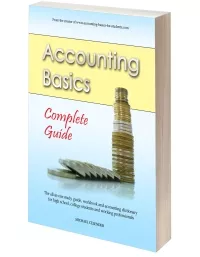Inventory Held For More Than One Year?
by Huykheng
(Cambodia)
Q: Every company assumes that their inventory is a current asset as its term is less than one year. What do you do with inventory which you expect to sell beyond one year's time?
A: Very good question.
The rule is that inventory one expects to hold for at least one year are classified as non-current assets.
For example, an investment firm trades in investments (investments in other companies). Its inventory - the items it buys and sells - are investments. These investments (if the company intended and expected to sell them within a year) would be classified as inventory under current assets.
However, if the company also had investments that it expected to hold onto for at least one year, these would be classified under non-current assets.
The same would apply to any inventory (assets that the business traded) that they expected to sell after one year.
Comments for Inventory Held For More Than One Year?
|
||
|
||
|
||
© Copyright 2009-2021 Michael Celender. All Rights Reserved.
Click here for Privacy Policy.





